 |
ACER
rubrum 'Northwood' Selected from a northern Minnesota seed source by the University of Minnesota, this cultivar is particularly hardy. Which, to be honest, is irrelevant in this country anyway! I've got a 'Northwind' as well, but I'm really not sure whether this a labelling mistake somewhere down the line, or whether they really are two different clones... |
|
|
|
||
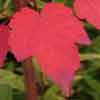 |
ACER rubrum
'October Glory'
This cultivar originated in New Jersey USA in 1961 and is upright in habit. We grow these trees for their gorgeous autumn colour, and this one certainly gives value for money as it tends to hold the leaves longer into the autumn than many. The fantastic fiery crimson and dark orange red autumn colour develops reliably in less favourable sites too. |
|
|
|
||
 |
Acer rubrum 'Red
King'
I can't find any detail about this one; suffice it to say that it has excellent red autumn colour! But there's more to it than that...it stood out this last autumn as being something rather special. It also branched more freely than most, though as it is still relatively new to us, I will reserve judgement as to whether that is typical of the cultivar or just the way they grew this year. Definitely one for the future and already one of my favourites. |
|
|
|
||
 |
Acer rubrum 'Red Sunset'
See Acer rubrum 'Frank's Red' |
|
|
|
||
 |
Acer rubrum 'Scanlon' An American selection of upright, columnar habit. Expect the width to be approx. one quarter of the height as it develops. Bright orange initial autumn colour matures to purple red before leaf fall. Very tolerant of dry soils. |
|
|
|
||
 |
ACER rubrum
'Schlesingeri' |
|
|
|
||
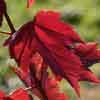 |
ACER rubrum
'Somerset'
(A. rubrum 'October Glory' x A. rubrum 'Autumn Flame') Fantastic new selection, which though from the USA seemed appropriate for us here in Somerset, England! From the same research program as 'Brandywine', and the same parentage. Vivid pinkish red autumn colour and rich red bark particularly noticeable in winter. Gardeners in milder locations often struggle to find trees which colour well in autumn. This selection appears to fulfil this requirement, with excellent colour even reported in Georgia, southern US. This is perhaps my favourite cultivar (irrespective of the name). Its more compact habit makes it particularly wind tolerant. |
|
|
|
||
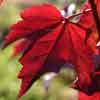 |
ACER rubrum
'Sun
Valley'
Another great recent introduction from the USA, this tree really does glow in the autumn, with more orange shades through the autumn colour. This one has a wonderful tidy, fundamentally upright habit. |
|
|
|
||
| ACER
rubrum 'Tilford'
An older cultivar, dating back to 1949. Less common, rounded head shape. Autumn colour varies with the season, but potentially changing from bright red through to orange. I find this one to be particularly vigorous, naturally wanting to make a tall single trunk. |
||
|
|
||
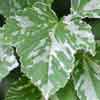 |
ACER rufinerve 'Albolimbatum'
An attractive small bushy tree with the leaves strongly variegated with white, particularly at the margins. The bark is usually green, but in winter becomes violet purple with white striations and a white bloom. The best colour is shown by mature plants and those on poor soil. This season I am delighted to be able to offer young plants on their own roots. It takes a lot of skill and patience to root acers from cuttings and to grow them on in this manner, but it does make a more natural plant. You can enjoy the true characteristics of the cultivar without any influence from the rootstock. |
|
|
|
||
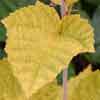 |
ACER rufinerve
'Winter
Gold'
This is visually indistinguishable from Acer rufinerve 'Erythrocladum' (perhaps it's a fancy name for the same thing?) Here the winter bark colour is an amazing shade of amber with faint white striations and a ghostly silver sheen. Truly remarkable but not always the easiest plant to establish, particularly from a very small plant. See it in our Winter Garden |
|